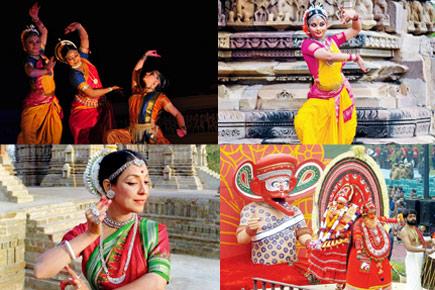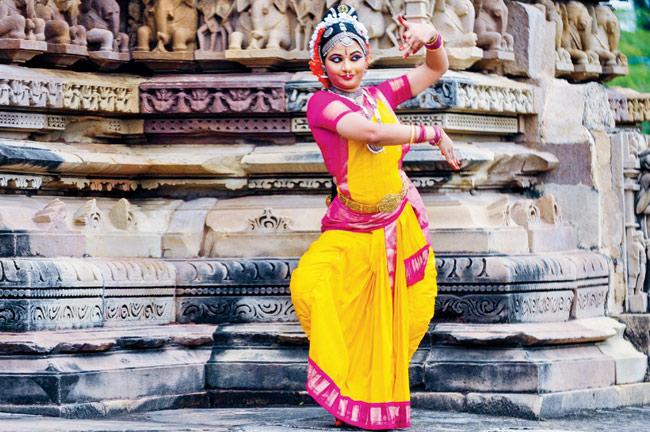Dance festivals in Khajuraho and Kuttikkol in North Kerala might be a great way to travel, learn and experience dance in a way unlike none other, as Suprita Mitter discovers

North Kerala
Khajuraho
Where stones dance
Amidst the temples of Khajuraho, one felt that that the perception of it being a site full of erotic sculptures, had been blown out of proportion. Yes, erotic carvings are everywhere but remain just a part of the larger picture that depicts various aspects of family life. There are intricate carvings of elephants, soldiers, dancers and musicians. Khajuraho’s uniqueness lies in its beautifully preserved, 1,000-year-old temples that have witnessed the rise and fall of dynasties as well as the joys and woes of the common man.
ADVERTISEMENT

Odissi dancer Madhavi Mudgal at Khajuraho. Pic courtesy/Avinash Pasricha
Movements of time
The Khajuraho temples were built about 35 kms from the medieval city of Mahoba, the capital of the Chandela kings, who ruled from AD 9-11 in an area that forms modern-day Bundelkhand. Khajuraho initially extended over 21 sq kms, and contained about 85 temples.

A dancer at the Khajuraho temples. Pic courtesy/Uakska, Bhopal
There were periods when invaders destroyed temples. Today, only about 20 temples remain and are spread over six kms. Having been saved by their remoteness, the present temple complex is dedicated to Shiva, Vishnu, the Jain Tirthankaras, Ganesha and Surya. It became a UNESCO World Heritage Site in 1986. It is divided into the eastern, western and southern groups of
temples.
The western group includes the Laxman Temple, Jagdamba Temple, Vishnu Temple and many more. The most spectacular is the Kandariya Mahadeva temple, which is also the largest temple in the complex. The complex glows with the warmth of sandstone. No cement or mortar was used in its construction.
While at the complex, catch the spectacular Sound and Light Show. Time travel takes the visitor to 1,000 years ago by using mythological stories and folklore, as there is not much concrete evidence of the history of Khajuraho.
The music, Amitabh Bachchan’s voiceover, the tales of kings and queens, the chanting of shlokas and Bachchan’s soul-stirring rendition of his father, Harivansh Rai Bachchan’s poetry about Khajuraho’s sculptors, makes for a captivating experience. The eastern and southern groups of temples, including the Vamana and Chaturbhuj temples, are full of beautiful slender sculptures. A visit to the recently excavated mounds also makes for an engaging detour.
The Khajuraho Festival of Dances, which started regularly since 2002, presents the most colourful and brilliant showcase of India’s Classical dance forms in a week-long extravaganza. The dances are performed in an open-air auditorium, usually in front of the Chitragupta and the Vishwanatha temples. This year too, renowned dancers will present a variety of dance forms including Mohiniatam, Kuchipudi, Bharatanatyam, Odissi, Kathak, Mayurbhanj Chau, Manipuri and Devdasi Dance.
Did you know?
It is believed that two date/palm trees flanked each gate of the temple complex. Due to these date trees, Khajuraho was derived from Khajura-vahika. In Hindi, “Khajura” means date and “Vahika” means bearing.
 Subscribe today by clicking the link and stay updated with the latest news!" Click here!
Subscribe today by clicking the link and stay updated with the latest news!" Click here!






